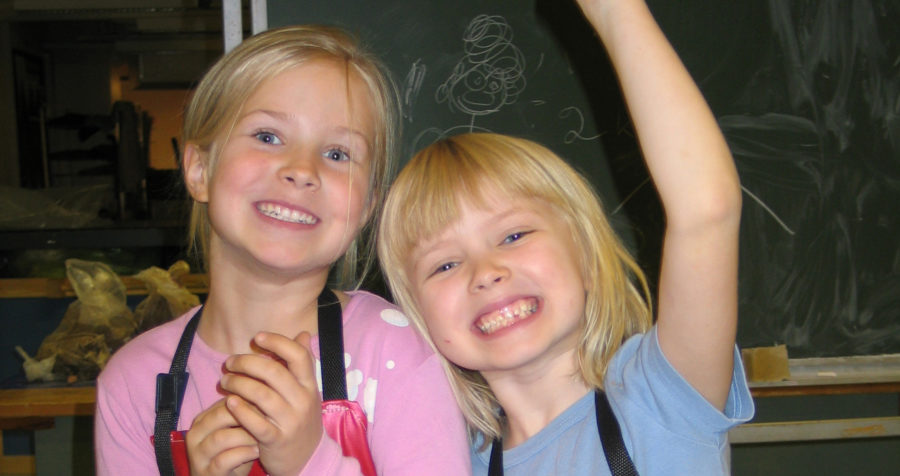Basic Education in Arts at Taito Crafts Schools

Background
The operating concept of the Taito Group is to promote Finnish crafts culture as a skill and trade. Maintaining crafts skills is the organisation’s core social mission. Arts education plays an important role in supporting the people’s well-being and comprehensive growth.
Basic education in arts is organised by municipal institutes, such as adult education centres and specialised art schools, and private art institutes. In addition to educational institutes, some arts and crafts associations may arrange basic arts education. Regional and local cooperation has increased in the organisation of education, as have consolidations of institutes due to municipal amalgamations. The strength of the local associations is in their networked operations (crafts centres), which means that the wide-ranging activities of crafts school result in efficiency, efficacy and equal accessibility.
Basic education in arts was pioneered by music schools, which sprung up in the 1960s, followed by schools for visual arts and dance in the 1970s. The planning of actual basic education in arts was not started until the mid-1980s. New disciplines are represented by crafts, architecture, audiovisual art, theatre, circus and literary art.
The first crafts school began its operations in the autumn of 1989 in Seinäjoki. From the very start, the Taito Group cooperated actively with the Ministry of Education and Culture and the Finnish National Agency for Education to develop its operations, and representatives of the Taito Crafts Schools for Central Finland and Pirkanmaa were involved in developing the crafts curricula. The organisation has emphasised teacher education from the get-go.
The Act on Basic Education in the Arts was issued in 1992, and the national curriculum principles were approved in the same year. Arts education for adults was initiated in the late 1990s. At the turn of the millennium, the Taito Crafts Schools operated by the associations in Pirkanmaa and Central Finland received permission to organise basic education in arts and were included in the state aid scheme based on hours of education provided.
Cooperation between the central organisations for basic education arts began in 2002, and the joint Taiteen perusopetusliitto TPO ry (Finnish association for basic education in arts) was established in 2007
Objectives
Crafts skills are an asset that grows and deepens through use, which is why it is important to provide opportunities to develop them from a young age. The crafts schools bear strong cultural significance in terms of maintaining crafts skills and securing the organisation’s future. Alongside the crafts schools, the arts education has in many ways enriched the course and workshop activities of the member associations: the diversity of crafts techniques and work methods has increased, and the creative and process-oriented approach has expanded the product-centric view, giving it a more overarching significance focused on well-being.
In terms of crafts, basic education in arts is provided in accordance with the basic or advanced syllabus. The scope of the basic syllabus is 500 hours while the advanced syllabus is 1,300 hours. Any possible early-age and adult education is decided upon by each provider in its curriculum.
Basic education in arts is aimed primarily at children and young people, but it can also be arranged for adults. Basic education in arts is taught by crafts professionals of the relevant associations. Part-time teachers can be craftspersons, designers and artists working in the field.

How it was done
The education takes account of special local and regional characteristics and strengths, along with demonstrating modern cultural traits and crafts traditions in its implementation. The learning environment at a crafts school must facilitate the fulfilment of the goals laid down in the curriculum. In addition to the curriculum and teaching premises, the concept of a ‘learning environment’ is considered to include the atmosphere of the crafts school, social situations related to school and studies, and each school’s operating culture, for example.
The physical premises of a crafts school must facilitate safe activities in accordance with the curriculum and the use of various materials, techniques, themes and processes. The premises and tools must also be suitable for people of varying ages and skill levels. Taking care of the tools and ensuring their proper storage is an important part of crafts education. In order for a crafts school to be successful, the premises must provide sufficient stimulation, comfort and modern amenities.
The mental learning environment is formed by the atmosphere affecting the student. The teacher plays an important role in creating an atmosphere that is open, safe and respectful of everyone’s personality. The goal is to build an atmosphere that is encouraging, relaxed and positive: the students must enjoy coming to the Taito Crafts School and go home in high spirits.
A good pedagogic environment requires a good physical, psychological and social learning environment at its foundation. A feasible curriculum and the expertise to implement it properly are also required. The development of a person’s own expertise and the school are preconditions for high-quality operations.
The future – key elements of success
Basic education in the arts is one of the success stories in the Finnish education system. Taito Crafts School is the largest educator in field of crafts Schools. The non-governmental handicraft organization Taito had a strong role in starting this form of education.
The new national curriculum for basic education in arts will be implemented in the autumn of 2018. As regards handicrafts, the new curriculum brings the relationship between crafts, design and technology into even stronger relief than before. In Finland, crafts are a popular hobby among both children and adults, which indicates a bright future for basic education in arts in terms of crafts. However, it is important to listen to the wishes of children and young people with regard to their hobbies. Going forward, it is also essential to develop cooperation with other educational institutions providing education in crafts in order to secure life-long and personalised paths of learning.
Key factors
1. National curriculum
The new national curriculum for basic education in arts will be implemented in the autumn of 2018. As regards handicrafts, the new curriculum brings the relationship between crafts, design and technology into even stronger relief than before.
2. Listen to the students
In Finland, crafts are a popular hobby among both children and adults, which indicates a bright future for basic education in arts in terms of crafts. However, it is important to listen to the wishes of children and young people with regard to their hobbies.
3. Cooperation
Going forward, it is also essential to develop cooperation with other educational institutions providing education in crafts in order to secure life-long and personalised paths of learning.

